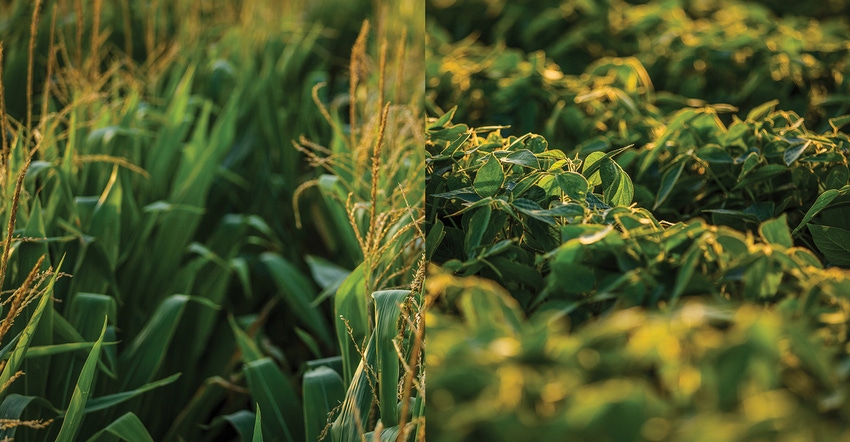January 13, 2020

To achieve optimal yield and performance from herbicides, fertilizer and other inputs, many growers use a corn and soybean crop rotation. This practice helps manage diseases and pests that might affect their crop. But there are also other, more sustainable advantages when using a diverse crop rotation for fields and farms.
Growers use crop rotation for weed-control benefits. This is an important part of any crop management strategy, as weeds pose a major threat to crops by competing for nutrients in the soil. Rotation also helps minimize or avoid added damage from other pests — both above and below the ground.
“If you continually grow a single crop consecutively on the same ground, you’re going to get buildup of diseases and pests that could lead to decreased yield potential or quality problems,” says Nick Fassler, BASF technical marketing group manager. “Similar crops tend to have the same pathogens; thus, crop rotation interrupts the life cycle of pests and their habitat.”
Reducing crop stress
Rotation is a good practice when it comes to managing aboveground and belowground pests. For example, with corn rootworm, rotating soybeans between corn crops helps alleviate the insect pressure. However, what’s happening beneath the ground in a corn-soybean rotation may be something growers want to also consider in the long term.
Each crop has a unique interaction with the soil, releasing and absorbing different nutrients, Fassler says. Because of this, continuous planting of the same crop can lead to depletion of those nutrients. For example, soybeans leave nitrogen in the soil, which in turn, allows growers to apply less fertilizer nitrogen when rotating to corn. This reduces costs and equipment use.
But according to a recent Iowa State University study, soybeans leaving nitrogen-rich residue can lead to vigorous growth of decomposer bacteria and fungi microbes. Corn plants, when rotated onto those same acres, have relatively nitrogen-poor residue, so the soil microbes turn to attack older organic matter in the soil as a source of nitrogen to keep up with the consumption levels they were used to under soybeans.
The ISU study found that it may be possible to sustain or increase organic matter by introducing other grains and legumes as well as cover crops, such as rye or oats, into the corn-soybean rotations.
Building soil health
When introducing a diverse crop to a rotation, it results in a more varied microbe food source and diverse microbial community belowground, Fassler says.
According to USDA studies, crops rotated with different root architectures will impact soil structure in a variety of ways. Massive, fibrous root systems will help improve aggregation of microbes, especially near the surface.
It’s important for growers to have crop diversity in their farming operation. “The more diversity you have in your rotation, the more you’re going to lower the disease and pest pressure, as well as increase organic matter,” Fassler says.
By reducing yield-robbing weeds and other pests through a diverse crop rotation, you are not only controlling pests, but also giving back important nutrients to the soil. You are then reaping more of the benefits of your investment and contributing to the longevity of your farming operation for future generations.
To learn more about BASF’s other sustainability initiatives, visit Living Acres.
Source: BASF, which is solely responsible for the information provided and is wholly owned by the source. Informa Business Media and all its subsidiaries are not responsible for any of the content contained in this information asset.
You May Also Like




